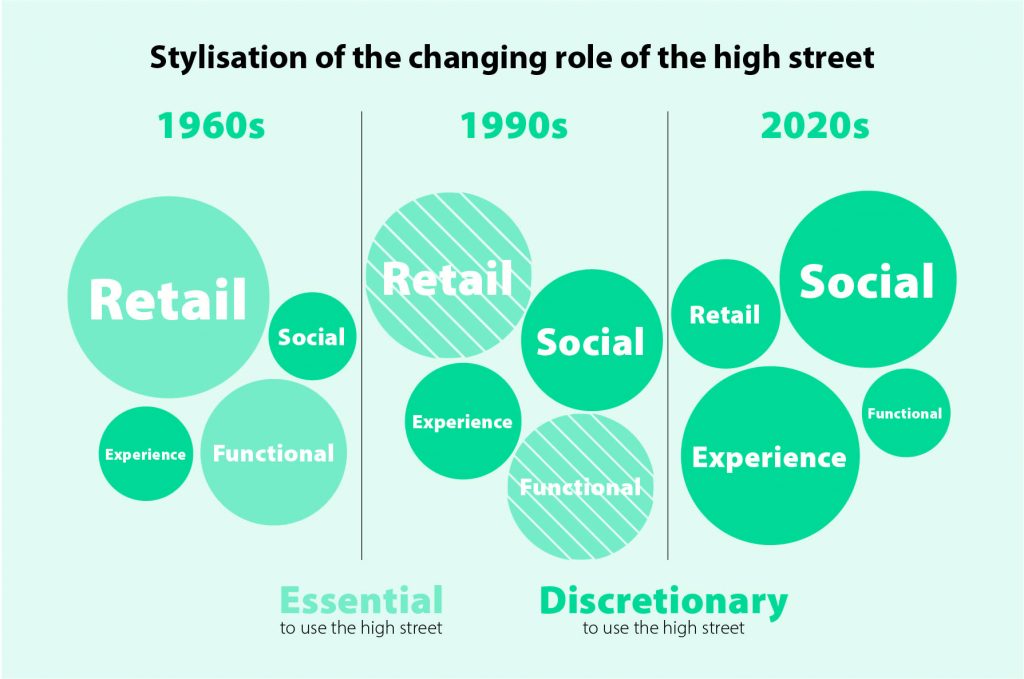New guidance offers tailored recommendations for supporting town centres.
High streets and town centres were changing long before COVID-19. The pandemic supercharged many pre-existing trends, creating both new challenges and opportunities.
The role of high streets has evolved in recent decades, from predominantly retail and functional activities – such as accessing banking and postal services – to being a locus for socialising and enjoyable experiences as shown in the graphic.

Meanwhile, the growth of out-of-town shopping parks and telephone-based and online services has meant regular trips to the local shopping centre are no longer essential.
Nowadays, shopping centres need to compete not just with each other, but also with cyberspace to attract footfall. Local authorities need to understand and respond constructively to these trends to foster renewed and resilient high streets.
Consultants Pragmatix Advisory and futures experts Trajectory have undertaken research for the LGA that outlines steps councils can take to do this. Through a series of in-depth interviews with council officers, experts, and businesses, and a review of existing evidence, the project has produced a collection of practical, easy-to-access guidance documents and videos.
COVID-19 has reinforced the demand for useable, attractive outdoor spaces, and work is already under way to make town centres more appealing. Whether it is improving the visuals in shop windows, such as the Hope and Light Community Christmas project in East Lindsey, or the removal of redundant buildings to create a greener centre in Scarborough, councils are working hard to make the high street a place that people want to be.
Footfall is being boosted by programmes of cultural events, such as the Stockton International Riverside Festival, which draw visitors into town centres. But no two high streets are the same, and the challenges they face – and the responses to them – need to be different too.
The ‘Creating resilient and revitalised high streets in the “new normal”‘ guidance supports councils, with tailored recommendations based on the type of town centres and the communities they serve.
There have been covid winners and losers, with one of the big differentiators being changing commuter behaviour. The shift in working patterns has offered village and dormitory town centres the opportunity to develop a daytime economy, as remote workers demand products and services that they would previously have sought in the urban centres where they worked.
The loss of those same commuters has resulted in metropolitan high streets developing their night-time economy, in response to lower daytime footfall.
Consumers’ climate awareness and demand for more sustainable products appears to benefit high streets with proportionately more independent shops and producers, and whether a town centre has a high- or low-density catchment area has implications for green transport provision.
Trajectory has identified 35 trends likely to impact the high street and councils’ thinking about them. Strategies around climate change are already in place in many locations, but the speed of technological change remains a perennial challenge for those planning the futures of our town centres.
How will the rollout of 5G and the Internet of Things impact on how consumers use these areas, and what opportunities do they provide? To what extent does the ‘metaverse’ and the ‘4th place’, where humans live within a digital entertainment environment, represent competition to high streets’ social and experiential offering – or are they complementary?
A detailed information pack outlining the trends is available online to help councils shape plans for more resilient and revitalised high streets.